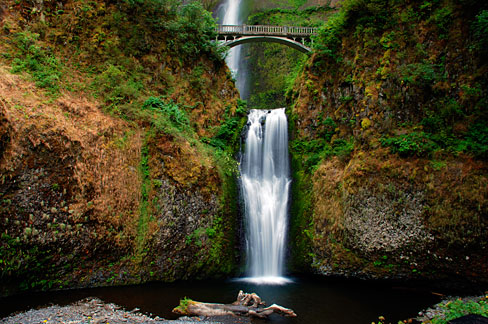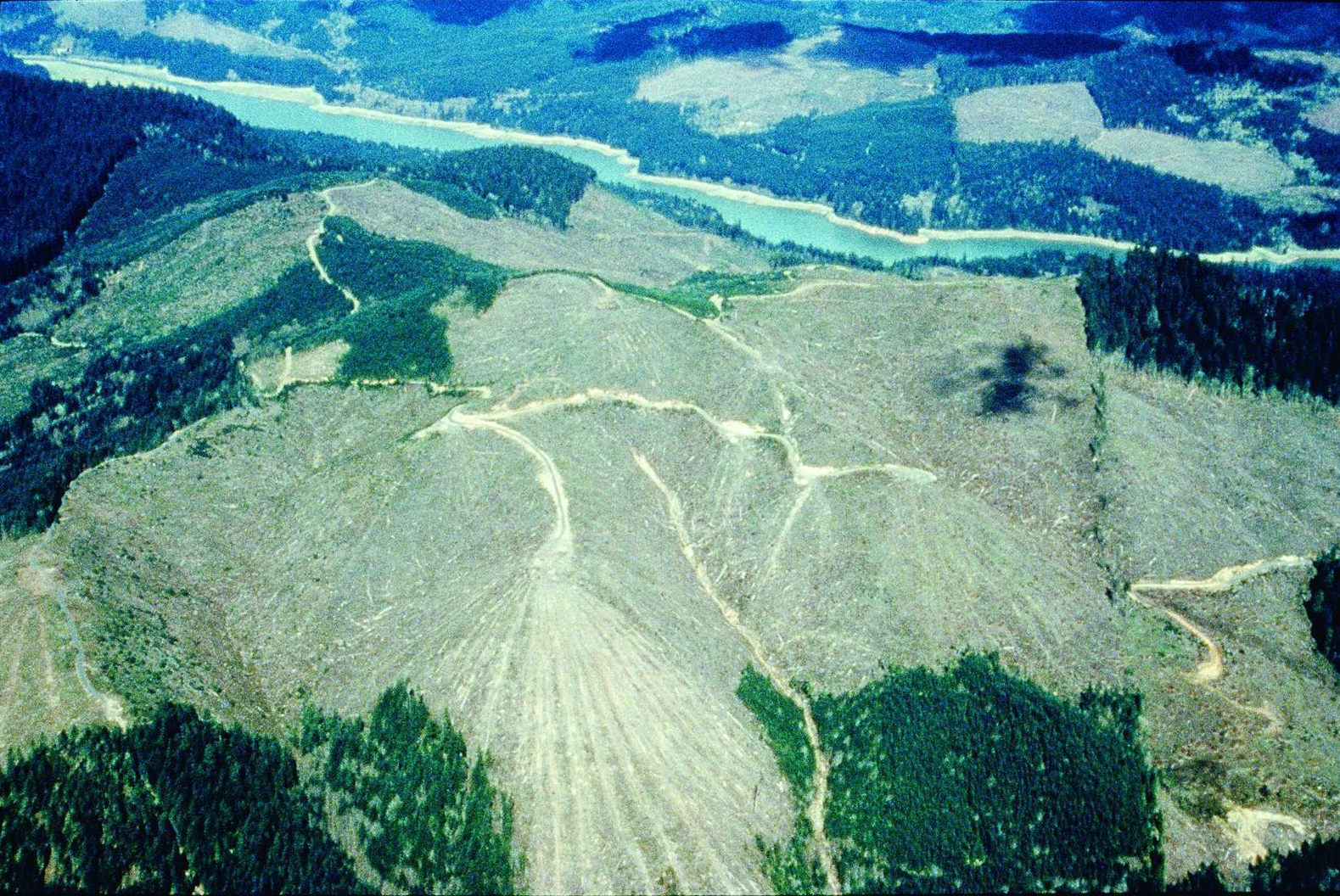Alas, a full-on Bull Run solution is not possible for every other municipal water supply in Oregon, but more could be done.
Read MoreLessons from Salem: Protecting Local Drinking Water Supplies

Forest Service
Alas, a full-on Bull Run solution is not possible for every other municipal water supply in Oregon, but more could be done.
Read MoreCurrently, less than 1 percent of Oregon streams, by mileage, are included in the National Wild and Scenic Rivers System. An estimated additional 10,000 miles (less than 3 percent of the total mileage) of Oregon streams are eligible for inclusion.
Read MoreThere are times when Congress acts in a visionary manner. (Is it less so today, or is it just me?) Such was the case in 1968 when it enacted into law the Wild and Scenic Rivers Act.
Read MoreIf one is going to live in or near a forest, one assumes a higher risk of fire. The best way to minimize that risk is to seriously and continually create and maintain defensible space. It’s not cheap. If it were, it would have been done already.
Read MoreIn the backcountry, fire is wonderful, necessary, and inevitable.... In the frontcountry, fire is awful, unnecessary, and preventable.... The biggest problem with fire occurs where the frontcountry meets the backcountry, the bureaucratically named wildland-urban interface (WUI: “woo-ee”).
Read MoreMillions of acres of federal old-growth forest still stand because of former Oregon governor Barbara Roberts (D). The Upper Klamath River would have another damn dam and not be safely within the National Wild and Scenic Rivers System if not for Roberts. Oregon would have some god-awful cyanide heap leach gold mines if not for her. If not for her . . . (there’s much more).
Read MoreIn 1986, Congress enacted the Columbia River Gorge National Scenic Area Act to, among other things, “establish a national scenic area to protect and provide for the enhancement of the scenic, cultural, recreational, and natural resources of the Columbia River Gorge.” In 2017, Representative Greg Walden (R-2nd-OR) proposes to throw it out the window.
Read MoreEveryone—including many a card-carrying conservationist—just needs to take a deep breath. Yes, there was a relatively large forest fire mostly on the Oregon side of the Columbia River Gorge. However, the clearing of the smoke gave proof through the day that our gorge was still there. The Columbia River Gorge was not “destroyed,” “lost,” “gone up in smoke,” “consumed,” or “dead,” as suggested by generally hyperbolic media reports by generally hysterical reporters, often quoting generally hysterical gorge lovers.... Neither volcanic eruptions nor forest fires can be prevented—and that’s a beautiful thing.
Read MoreSenator Ron Wyden had a visionary and bold bill that would establish a National Recreation Area System. I strongly supported that legislative provision in a post to this Public Lands Blog.... I heaped praise on the Wyden-Blumenauer bill that would have established generally strong conservation and management standards for new national recreation areas.... Now I must heap scorn on the Wyden-Bishop bill. The section that would establish a National Recreation Area System has been gutted of any significant conservation value and would only change the color on the map, but not management on the ground.
Read MoreThe congressional conservation pipeline is clogged. This is not because it is too full of fine legislation that would elevate the conservation status of certain public lands by designating wilderness, wild and scenic rivers, and other special protection areas, but because of the general dysfunction of Congress. (I hear it was worse before the Civil War.) One bill in that pipeline, sponsored by Senator Ron Wyden (D-OR) and cosponsored by Senator Jeff Merkley (D-OR), is the proposed Oregon Wildlands Act (OWA) of 2017 (S.1548, 115th Congress).
Read MoreThe federal public lands along more than half of the stream mileage in the National Wild and Scenic Rivers System (NWSRS) can be mined, notwithstanding its congressional “protection” in wild and scenic rivers (WSRs). This is because the Wild and Scenic Rivers Act of 1968 (WSRA) established three different classifications for WSR segments—wild, scenic, and recreational—and banned mining or not based on the classifications. The WSRA needs fixing to offer uniform protection against mining in the NWSRS.
Read MoreWith some tweaks, the proposed Northern California Conservation and Recreation Act can be a great bill that when enacted into law will be a gift of enduring benefit to this and future generations of North Coast Californians, all Californians, and all Americans.
Read MoreWho wouldn’t want “resilient” (“able to withstand or recover quickly from difficult conditions”) forests? With the name Resilient Federal Forests Act of 2017 (H.R.2936, 115th Congress), what could possibly be wrong with this bill?
Everything. Judge neither a book by its cover nor a bill by its name.
Introduced by Representative Bruce Westerman (R-4th-AR), the bill is the timber industry’s wet dream legislation. In only his second term in Congress, Westerman has received more campaign contributions from Big Timber than any other industry.
The Westerman bill would legislate horrifically harmful public forest policy into law.
Read MoreThe demand for wilderness and parks is most likely to increase despite any best efforts to limit Oregon's, so what about the supply of wilderness?
Read MoreFederal conservation systems are an unqualified social good and generally provide elevated protection and better management to important federal public lands and to resources and areas of high national significance. All existing federal conservation systems could be improved, and none should be weakened or discarded. Those that haven’t yet been codified by Congress need to be.
Read MoreIn 1927, Justice Oliver Wendell Holmes noted, “Taxes are what we pay for civilized society.” The timber-addicted counties need to become more civilized.
Read MoreIt costs more to feed a domestic housecat than to graze domestic livestock on federal public lands.
Read MoreCrabtree Lake in Crabtree Valley, home to some of the largest and oldest trees in Oregon, located on western Oregon public lands administered by the Bureau of Land Management, in Linn County, is part of the proposed Douglas-Fir National Monument. Photo: David Stone, Wildlands Photography.
There is no question that an Act of Congress can eliminate, shrink, or weaken a national monument proclaimed by a president pursuant to authority granted by Congress. What Congress giveth, Congress can taketh away. The property clause of the U.S. Constitution (Article 4, Section 3, Clause 2) ensures that. Yet in fifty-five Congresses over the past 110 years, Congress has rarely acted to eliminate, reduce, or weaken a national monument proclamation by a president.
Read More“Friends at home! I charge you to spare, preserve and cherish some portion of your primitive forests; for when these are cut away I apprehend they will not be easily replaced.”
Compared to its four adjacent neighbors, Oregon has the smallest percentage of its lands designated as units of the National Wilderness Preservation System. While the average of the areas of the five states protected as wilderness is more than 9 percent, in Oregon less than 4 percent of the land is so protected. Oregon has 47 wilderness areas totaling 2,457,473 acres. Additional potential wilderness areas (a.k.a. roadless areas) in Oregon total more than 12 million acres, with approximately 61 percent of that area being generally tree-free (in the Oregon High Desert and other desert areas considered part of the sagebrush steppe, aka Sagebrush Sea) and the remainder generally forested. Congress should expeditiously expand the National Wilderness System in Oregon.
Read MoreFinally on March 30, 1891, Congress enacted the Forest Reserve Act, which allowed the president to proclaim national forests from lands in the federal public domain. President Benjamin Harrison (1889–1893), who signed the legislation, eventually proclaimed forest reserves totaling 13 million acres, including the nation’s first: Yellowstone Park Timber Land Reserve (today, mostly the Shoshone National Forest in Wyoming).
President Grover Cleveland (1893–1897) created more forest reserves totaling 25.8 million gross acres (not all within the reserve boundary was federal public domain). President William McKinley (1897–1901) followed by proclaiming 7 million acres. President Theodore Roosevelt (1901–1909) established an additional 150 million acres of what would become known as national forests....
Thanks, Benny, Grover, and, most especially, Teddy!
However, more forest lands should be included in the National Forest System. This includes 2.6-million acres of generally forested Bureau of Land Management holdings in western Oregon. It includes other generally-forested BLM lands in eastern Oregon, Montana, Alaska and elsewhere. It includes large amounts of private industrial and small private timberlands that could be acquired from willing sellers.
Read More












